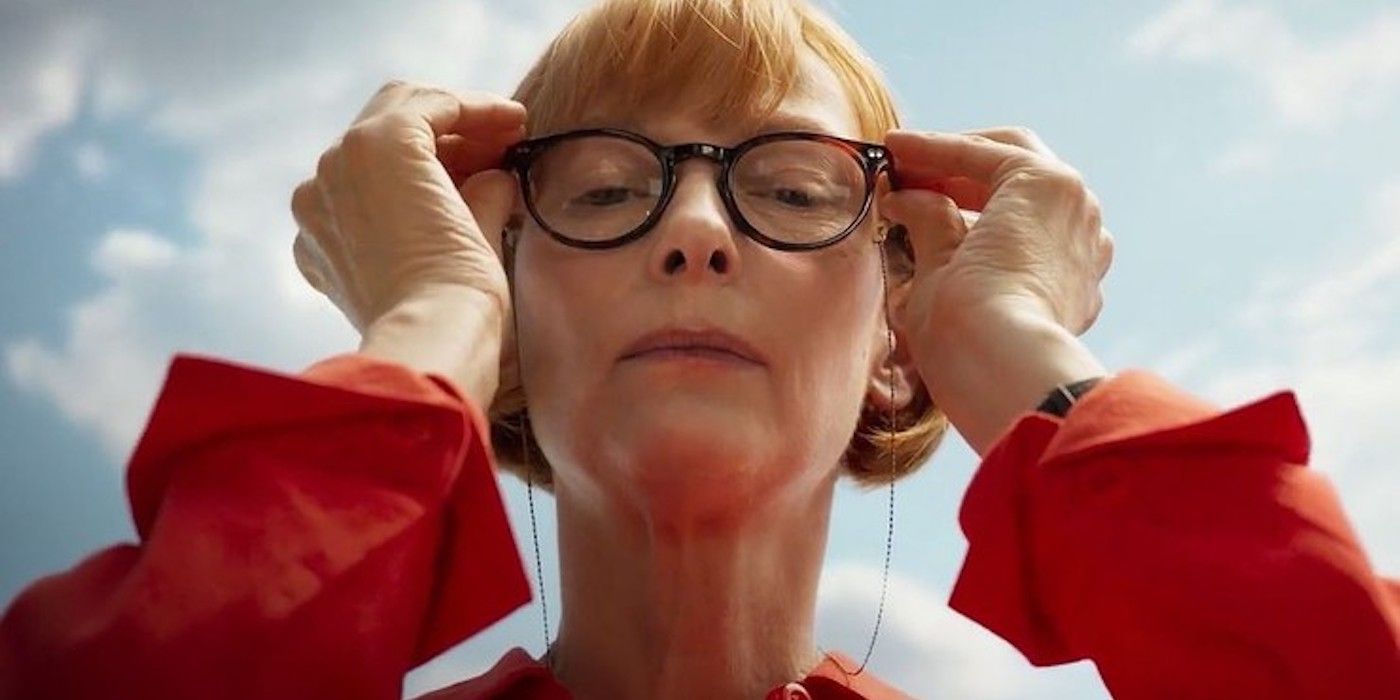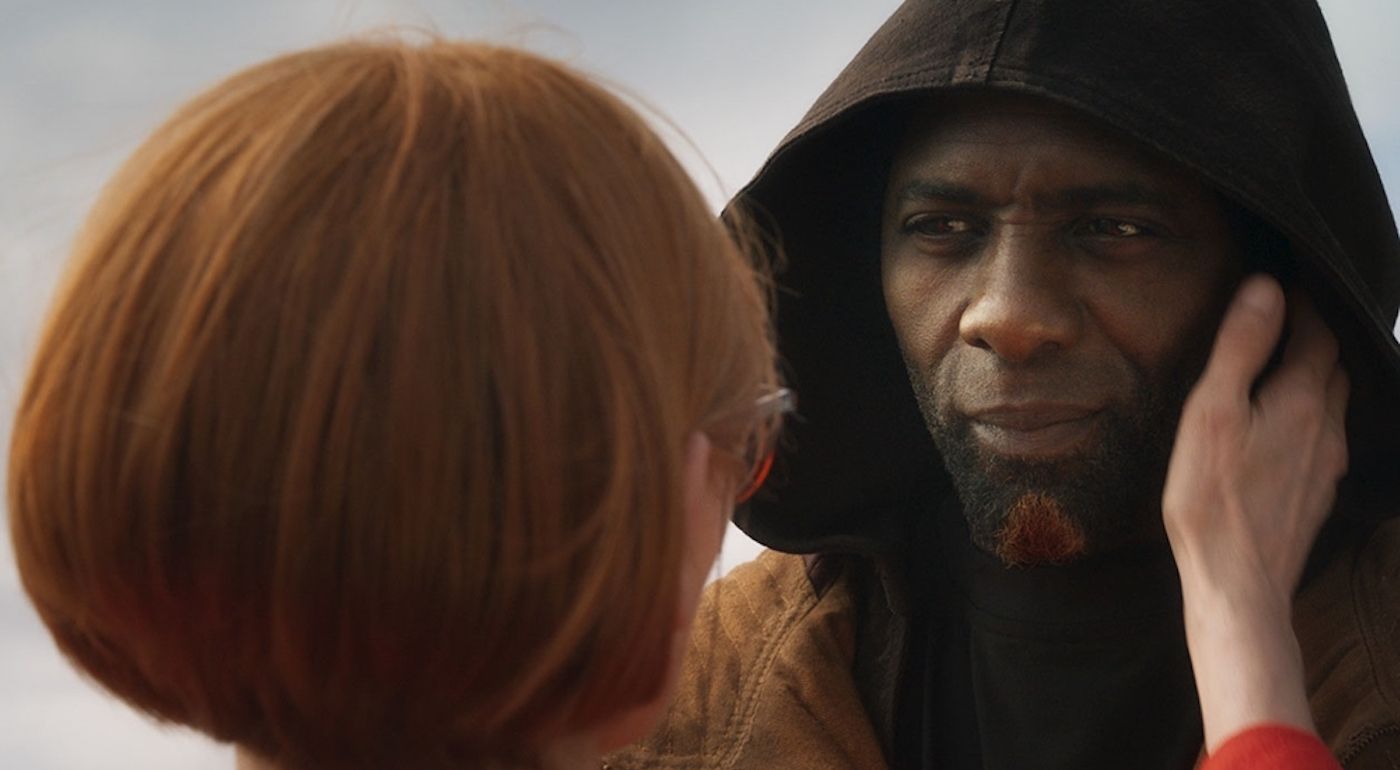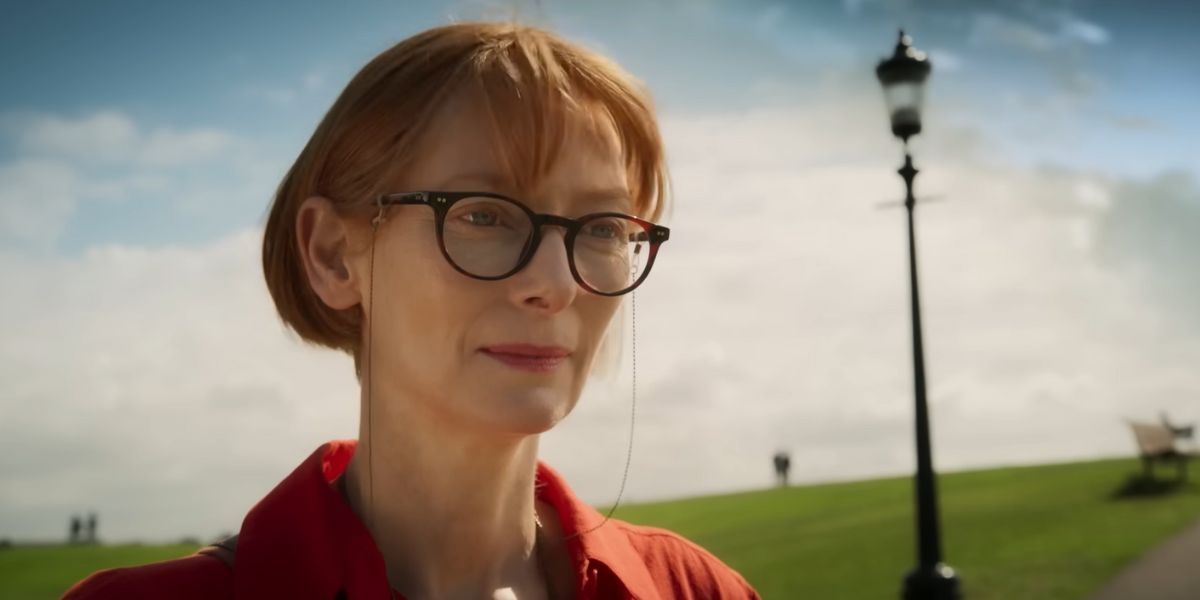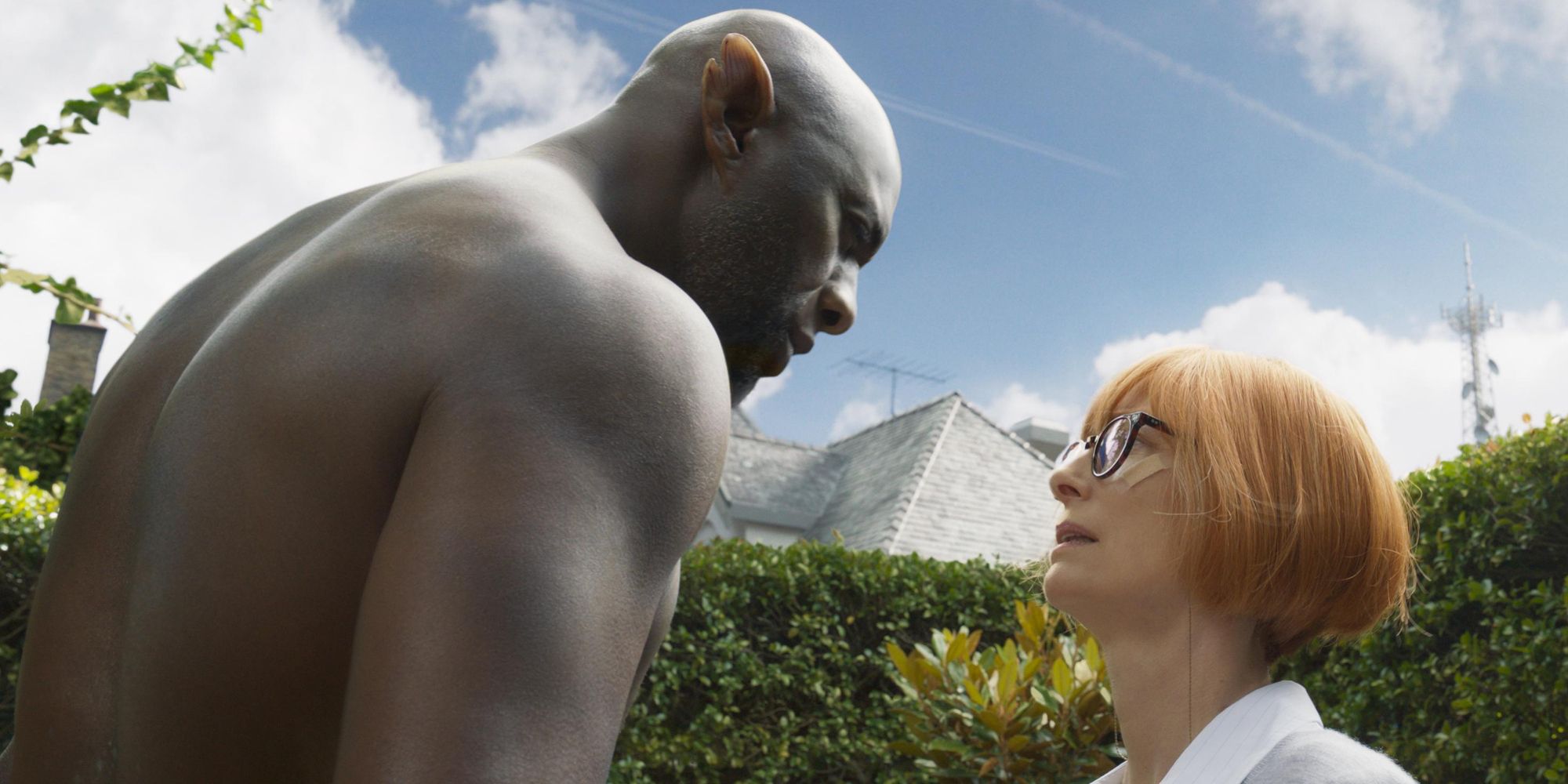George Miller’s newest film, Three Thousand Years of Longing, is a Russian nesting doll of stories. The film itself is one, presenting Alithea’s (Tilda Swinton) story through the framing of her own narration. In Alithea’s narrative, we get her journey into this mystic world as she goes from a narratologist (someone who studies narrative and narrative structure) being tormented by specters of fiction to a woman living out a fable and seemingly besting it. And within Alithea’s narrative, we get the Djinn’s (Idris Elba) story, a three-act play of his own failures explaining how exactly he ended up in the lamp that fell into Alithea’s hands. And even deeper, within Djinn's own tale we hear stories within stories about the people he was bound to. From its structure to its use of flashbacks to the use of narration to the events unfolding on screen, everything in Three Thousand Years of Longing is a lovingly painted movie hearkening back to modes of storytelling from across millennia.
Honoring the History of Storytelling
Even in its less direct structural ways of upholding literary tradition in this film, there’s a keen awareness of the history of storytelling. The framing of a story within a story invokes bard’s tales of old, hearing mythic tales from storied beings just as Alithea does from the Djinn. Unlike a typical film narrative, Three Thousand Years of Longing puts its protagonist in the back seat for a decent part of the film in order to let the bard (in this case, the Djinn) weave his story. The Djinn’s presence, in particular, draws the film to focus on these older modes of storytelling. The Djinn’s tale is entirely conveyed through dialogue to Alithea though we the audience get to see the flashbacks, the story is being told in the oldest way humans have told them, from the mouth of another person. And similarly, the film calls back to the foundations of storytelling when Alithea and Djinn first speak to each other. The Djinn speaks in Greek at first, an integral language in the history of storytelling both written and spoken. They are first able to communicate with each other using the language of Homer.
The film itself is a fable. An old literary tradition of cautionary tales and though we all know the ending (the Djinn ends up in the bottle, the wishes don’t come to pass as expected, etc.), we are more invested in the journey of the story than the destination. While the Djinn spins his tale, Alithea frequently points out that almost every story involving wishing is a cautionary tale. We understand, like Alithea does, that once she chooses to make wishes they will not turn out how she or the Djinn hoped. The audience and Alithea know this not just from hearing his story but from an understanding of how these narratives normally play out. It’s both an individual analysis and a broad, genre-based one. This meta-commentary could feel heavy-handed in another film but Three Thousand Years of Longing has entrenched itself in the language of stories, in having a dialogue about stories as if we ourselves are narratologists. We and Alithea are both actively engaging with the story not just as listeners but as analyzers trying to pick it apart and suss out the truth. Thus, even if we expect we know where it is going we can’t help but follow along and try to make sense of it ourselves.
Effectively Using Narration
Narration is a device that films will often employ haphazardly. It’s often used as a cop-out for easy exposition rather than molded into the story itself, but Three Thousand Years of Longing does not use narration halfheartedly. From the start, Alithea is there guiding us through her story, only handing over the reins of narration when Djinn is telling her his own tale. But otherwise, she guides us through the film. Not just in a neat intro and ending to tie up the story but a constant presence that helps us feel that we are firmly in her point of view. It achieves the experience of imparting the first-person point of view to a film despite the medium's barriers to such a thing.
And in the end, we find this narration was not just Alithea experiencing the story within her head, it’s her writing it down in the aftermath. The narration is the story she is telling us within the film. One bard carrying another’s tale within their own. The film’s use of narration is a thoughtful aspect of the way the story is told rather than an extraneous part of it (as narration in film can often be). Despite it being a film, this constant use of narration and the framing device of Alithea’s journal makes the flow of the story feel much more literary, we have a direct guiding hand (or voice) in this film more so than in most, and thus it’s easier to go along with what we’re seeing no matter how outlandish because we understand that, real or not, this is the story as Alithea tells it. So even when she’s seeing visions of an ominous white specter in her lectures, having extra planar intercourse with Djinn, or arguing with characterized versions of her old neighbors, we take them in stride with the understanding that we are seeing the story as Alithea experienced it rather than in a way that makes the most cohesive sense.
A Love Letter to Storytelling
All of these touches of self-aware, self-indulgent storytelling helps to lend to the storybook feel of the film. It’s a fantasy story that feels much more like a fairytale than Lord of the Rings and that is all due to its indulgence and engagement with celebrating storytelling as a concept. Weaving all of these millennia's worth of different modes of storytelling into a film feels like a loving way to incorporate some of these bygone ways of storytelling into the modern day. We may not have bards, but we have directors, writers, and actors who will keep telling these narratives in their new mediums and with it keep these centuries-old traditions alive. The film makes a powerful case for storytelling as a form of connection. It’s stories that first bind Alithea and the Djinn together, she learns to love him through hearing how he has loved others, and we in turn learn to care for them through hearing Alithea's tale. Three Thousand Years of Longing is unabashedly a story about stories. It’s as concerned with its contents as with how it is being told. The film is a love letter to storytelling. It incorporates many different methods in order to bask in its own narrative and ultimately create something that is both modern and mythic, a tale as old as time reinvigorated by its admiration for the works that came before it.




